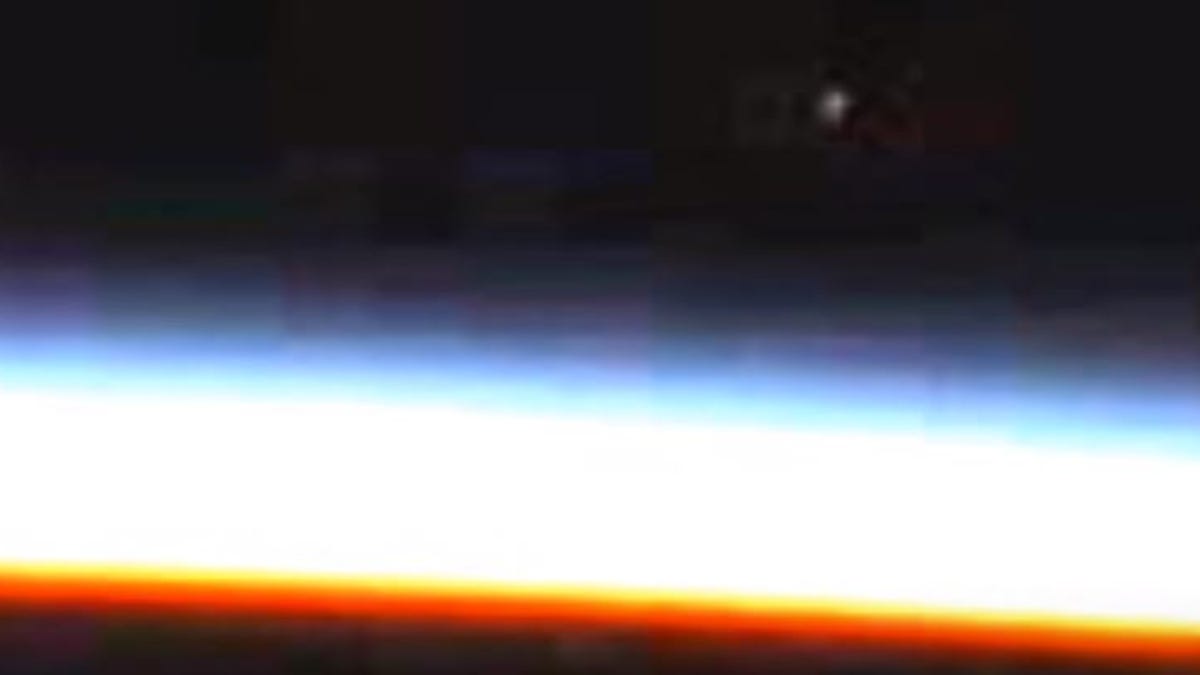Why NASA's video feed cut away from that 'UFO'
Suspicions are spreading on YouTube and elsewhere that the space agency saw something odd in orbit that it might not want to share with the world. We went ahead and asked about it.
Is NASA hiding clear video evidence of a UFO descending to Earth? To paraphrase what a spokesperson from the space agency told me when I asked: "Uh, no."
NASA increasingly has eyes all over the solar system, whether it's on Mars, above our heads in orbit or, as of this week, around Jupiter. So perhaps it shouldn't be that surprising that every few months word circulates around the internet that one of NASA's eyes has captured a UFO or evidence of alien life. The latest such alleged sighting comes courtesy of NASA's High Definition Earth Viewing (HDEV) experiment aboard the International Space Station.
YouTuber StreetCap1 posted on Saturday what's described as an unidentified flying object entering Earth's atmosphere, adding: "What made it interesting was the camera cut off when the UFO seemed to stop."
The post doesn't actually suggest the object in the video is an alien craft, acknowledging that it could be something less exciting, like a meteor. Meanwhile, the video has been reposted several times with an emphasis on the insinuation that NASA deliberately shut down the feed and has something to hide.
"The video is from our High Definition Earth Viewing (HDEV) experiment aboard the ISS, which is mounted externally on the ISS," NASA spokesperson Daniel Huot explained via e-mail. "This experiment includes several commercial HD video cameras aimed at the Earth, which are enclosed in a pressurized and temperature-controlled housing. The experiment is on automatic controls to cycle through the various cameras."
In other words, there's no one actually at the controls of HDEV, which launched back in 2014, monitoring the feed to quickly cut it when UFOs show up in the frame. In fact, there's a much more mundane technical explanation for the feed apparently freezing before cutting to a "technical difficulties" card.
"The station regularly passes out of range of the Tracking and Data Relay Satellites (TDRS) used to send and receive video, voice and telemetry from the station," Huot said. "For video, whenever we lose signal (video comes down on our higher bandwidth, called KU) the cameras will show a blue screen (indicating no signal) or a preset video slate."
You can actually see this happen pretty frequently for yourself. Spend enough hours watching the live feed on any of NASA's apps, UStream channels or other platforms and you'll certainly see it drop out.
But whether you think losing the feed with a weird object in frame was convenient timing or not, the question remains: What the heck was that thing?
"As for the 'object,' it's very common for things like the moon, space debris, reflections from station windows, the spacecraft structure itself or lights from Earth to appear as artifacts in photos and videos from the orbiting laboratory," Huot said.
NASA just loves to heap on the disappointment. Just when we were finally accepting the fact that the Mars Curiosity rover probably didn't photograph an alien woman on the Red Planet. Oh well, there's always hope Juno will find a Jovian sea monster.


